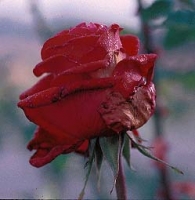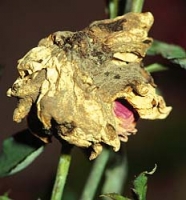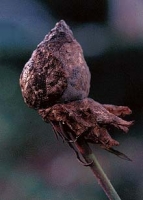![]() Prices in Canadian Dollars.
Prices in Canadian Dollars.![]() Prefer to call and speak to a floral agent? 1-877-277-4787
Prefer to call and speak to a floral agent? 1-877-277-4787
Diseases Due To Lack Of Post Harvest Care
Botrytis
Mold (B. cinerea) is the single most common fungus in Mother Nature’s arsenal. It is the primary attack weapon to attack aging or fading flowers in order to start the recycling process. So if you notice that as your flowers age they are developing a mold, understand that this is nature trying to recycle the nutrients in the flowers to make them available for other plants; it is part of the natural cycle of things rather than a personal attack on your beautiful vase of roses or flowers.
Botrytis is an airborne fungal disease that can affect all flower, fruit and vegetable tissues. Initially it shows as raised pinpoint spots. These develop into blotches of tan-coloured spots and if allowed to develop further, will eventually show as hairy mold. As befits this most common of fungus problems, spores are lighter than air and are carried along on the air currents. If you happen to have a flower that is badly infected and the fungus has moved to the fruiting stage, moving the flower will produce a “cloud” of fungal spores that is easily seen.
It loves temperatures between 60 and 72 degrees Fahrenheit (coincidentally the temperature of most homes), and must have water to germinate its spores. Botrytis fungus feeds on dead and decaying tissue, as well as on living tissue.
To minimize botrytis:
- Keep your flowers dry ( the buds and petals). Do not spray water or allow water to drip onto the Flower heads
- Remove infected flower petals (Example 1) or the entire bud and stem (Example 2) when required . This will keep botrytis from spreading to the rest of the flowers in a vase or arrangement.
- Do not leave flowers in their sleeve or wrap any longer than necessary. If condensation builds up in the sleeve or wrap, open the bunch, wipe moisture off of wrap, fluff up the blooms and allow them to dry a bit before re-wrapping.
- Keep good air circulation
Some Examples Of Botrytis In Roses
Example 1 |
Example 2 |
Example 3 |




